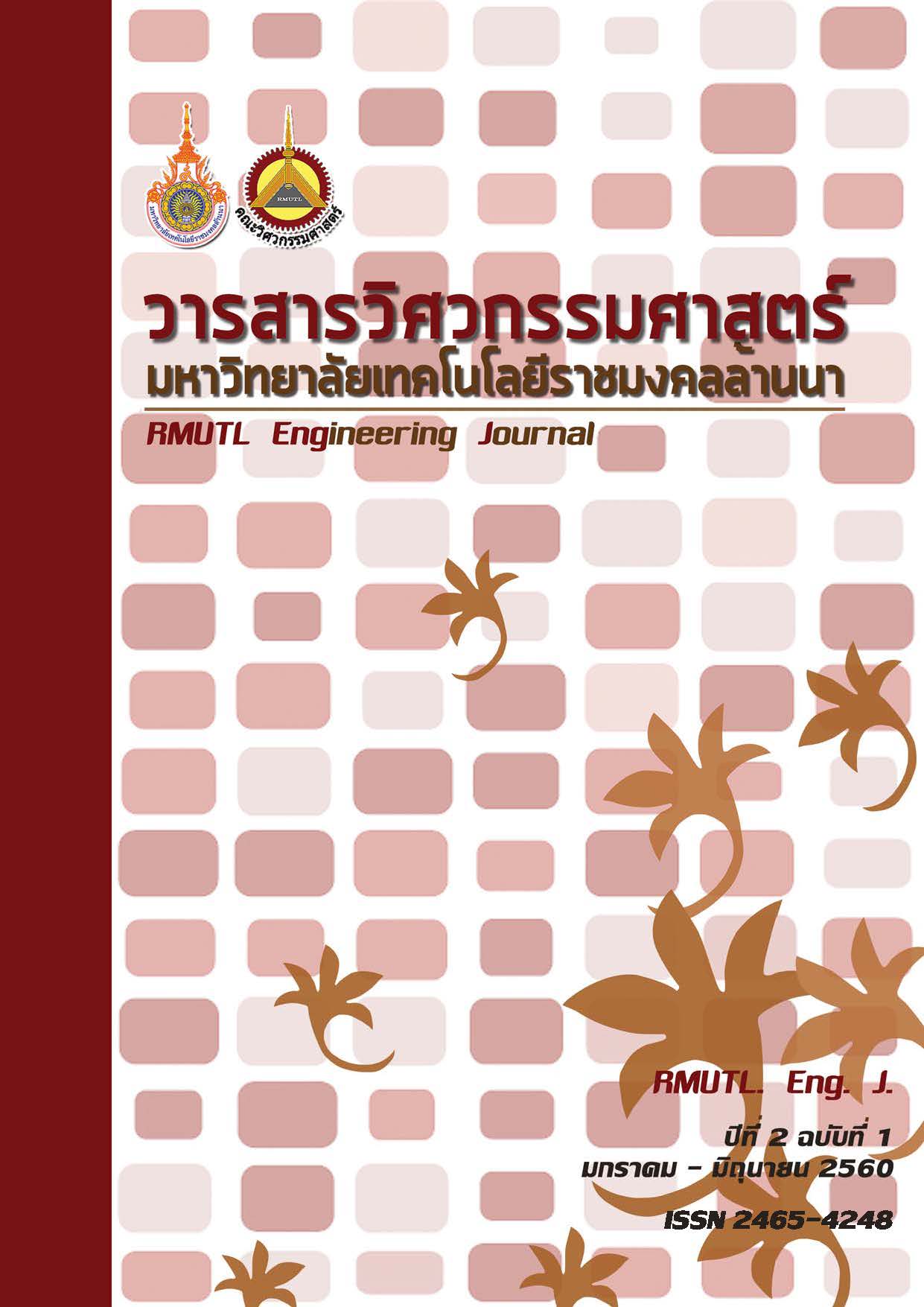Production and Potential Evaluation of Napier Grass Pellets Using Bio-fermented Solution as a Binder for Utilizing Biomass Fuel in a Downdraft Gasifier
DOI:
https://doi.org/10.14456/rmutlengj.2017.6Keywords:
bio-fermented solution, biomass, downdraft gasifier, Napier grass, pelletizingAbstract
This paper presents the production process of Napier grass pellets using a flat die pelletizer and bio-fermented solution as a binder, using a 10 to 4 ratio of Napier grass and bio-fermented solution. The average bulk density and average heating value of the Napier grass pellets is 657 kg/m3 and 18.10 MJ/kg, respectively. In addition, 12 kg of the Napier grass pellets were utilized as biomass fuel in the downdraft model “Extreme Power” gasifier. The fuel gases which were produced from the gasification of the Napier grass pellets contained 10.96% v/v of H2 , 10.74% v/v of CH4, and 3.64% v/v of CO. Potential evaluation of the fuel gases that were utilized as fuel in a cooking stove for thermal energy production was tested. The thermal energy produced was 10,699 kJ. The heat produced was transferred from the air above the cooking stove to 30 kg of water continuously, thus 30 kg of water was boiled an was changed from liquid to gas. Furthermore, the fuel gases were utilized as fuel in the generator to produce electricity. The generator continuously produced electricity which had the potential of 220 volts for 2 minutes. The electricity produced was utilized by various electrical appliances which consume energy in the range of 100 – 1100 watts. The produced electrical energy was 45.94 KW/hour.
References
2. เบญจมาภรณ์ ถนอมปิ่น. การประเมินวัฏจักรชีวิตของหญ้าเนเปียร์สำหรับโรงไฟฟ้าชีวมวลชุมชน. วิทยานิพนธ์มหาบัณฑิต, มหาวิทยาลัยนเรศวร; 2557.
3. ชนาภา วรรณศรี. การประเมินวัฏจักรชีวิตและต้นทุนของการผลิตกระแสไฟฟ้าจากแก๊สซิฟิเคชั่นของไม้โตเร็ว.วิทยานิพนธ์มหาบัณฑิต, มหาวิทยาลัยเชียงใหม่; 2551.
4. วรนุช แจ้งสว่าง. เทคโนโลยีการผลิตแก๊สเชื้อเพลิงจากชีวมวล. กรุงเทพมหานคร: บริษัท แดแน็กซ์ อินเตอร์คอร์ปอเรชั่น; 2556.
5. กรมพัฒนาพลังงานทดแทนและอนุรักษ์พลังงาน กระทรวงพลังงาน. คู่มือการพัฒนาและการลงทุนผลิตพลังงานทดแทนชุดที่ 4 พลังงานชีวมวล. Available from: http://www.dede.go.th/ewt_news.php?nid=774&filename=index/ [Accessed 4th February 2017].
6. วิไลพร ลักษมีวาณิชย์, กาญจนา สิริกุลรัตน์ และณัฐธนัญา บุญถึง. พฤติกรรมการยอมรับถ่านอัดแท่งจากซังข้าวโพดผสมกะลามะพร้าวของชุมชนตำบลช่างเคิ่ง อำเภอแม่แจ่ม จังหวัดเชียงใหม่. รายงานวิจัยมหาวิทยาลัยราชภัฏเชียงใหม่; 2554.










